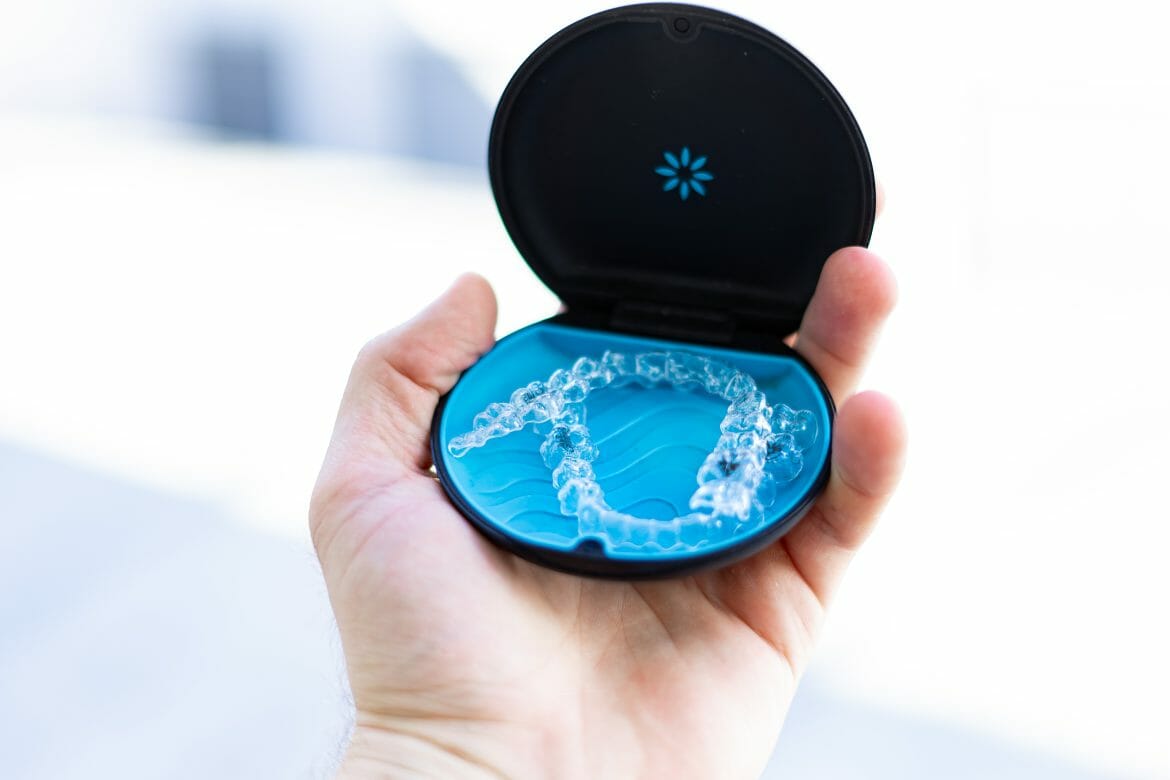Your smile says so much about you, and if you’re not happy with it, you may choose not to share it at all, especially if you have misaligned or crooked teeth. These can not only make you self-conscious when you smile but also interfere with the ability to practice good oral hygiene on a daily basis.
While traditional braces can help, many patients dread the thought of wearing them and maintaining the various brackets and bands. If you are older, you may feel braces are no longer an option, or it would be too embarrassing to take that next step.
Fortunately, today, you have another option available. Invisalign is an advanced solution for conveniently correcting teeth misalignments and creating a more confident smile. It may just be the perfect solution for you or a family member to achieve better oral health while also making you happier with your appearance.
What is Invisalign?
Invisalign is an orthodontic treatment to align crooked and misaligned teeth with the use of clear aligners or trays. These aligners are made with a flexible, BPA-free thermoplastic and help to correct various overbites, underbites, crossbites, open bites, gaps between teeth, and realignments of crowded teeth.
As a treatment, Invisalign is suitable for both teenagers and adults. The more invisible nature of the aligners is ideal for responsible teenagers to help avoid embarrassment and self-consciousness at that age. For adults, these aligners offer more flexibility in achieving a better smile and bite.
Advantages of Invisalign
In comparison with traditional braces, Invisalign has many advantages. These include the following.
- Clear trays are practically invisible and unnoticeable.
- Aligners are comfortable even though they are meant to fit snugly. The thermoplastic material does not irritate the interior areas of the cheeks and lips.
- Aligner trays are removable, so you can easily take them out whenever brushing, flossing, or eating, making practicing good dental hygiene simple and easy.
- The Invisalign process requires a shorter treatment time to realign teeth, with a visit to your dentist only every 6-8 weeks.
- This option involves fewer diet restrictions, and you can eat anything you like simply by removing them.
- Invisalign serves as a convenient option facilitated right in your dentist’s office instead of requiring you to visit an orthodontist.
How Does Invisalign Work?
Once you understand how Invisalign works, you can gain a better sense of how you can benefit.
With traditional braces, you require fixed wires and bands to pull your teeth into proper alignment. Not so with Invisalign. Instead, alignment is achieved by way of a series of trays or molds which force teeth into the new positioning over several months.
The process starts with the creation of customized aligners, or trays, to fit your mouth. This customization is obtained first through the gathering of computer-generated images and also digital impressions of your mouth contours and the current positioning of your teeth. From there, the aligner trays are made precisely to fit over your teeth.
Every one or two weeks, you will switch out your aligner tray with a new one. Each successive aligner fits with the next phase of the realignment of your teeth. In some instances, however, your dentist may choose to leave a tray in longer if your teeth haven’t responded enough and moved into the expected positioning.
The recommendation is that patients wear their Invisalign aligner trays 20-22 hours each day. The process itself takes less time than traditional braces, with the majority of patients needing to wear them for 6 to 18 months to achieve a successful alignment.
What to Expect with Invisalign
To begin the process, your dentist will determine if the surface of your teeth needs any preparation for proper fitting of the aligners, such as the application of small composite material patches. Once completed, you’ll undergo an initial fitting. Together, you and your dentist will work to find the best fit, one that doesn’t cause pain but is tight enough to create realignment.
Wearing the clear aligners will take time to get used to, so be compassionate with yourself and know that you are taking care of your dental health. Any discomfort you experience initially is only temporary. The changing of the trays will also aid in keeping the experience more comfortable.
In addition, you will be able to conveniently remove the aligners when it’s time to brush, floss, or eat. You do need to care for them adequately, however, by cleaning the aligners each morning and evening to remove any lingering mouth bacteria.
If you remove them during the day to eat or for any other reason, always rinse before reinserting them in your mouth. These practices help keep smells away and avoid discoloration. Be sure to speak with your dentist about how to care for your aligners to ensure they remain the most effective.
Learn More About Invisalign and Find Out If It’s Right for You at Bateson Dentistry
If you or your family members are ready to explore ways to improve a smile or better your overall oral health, Dr. Angela Bateson and her team are here to guide you. To determine if Invisalign clear aligners are right for you, contact our office for an evaluation and consultation today.

